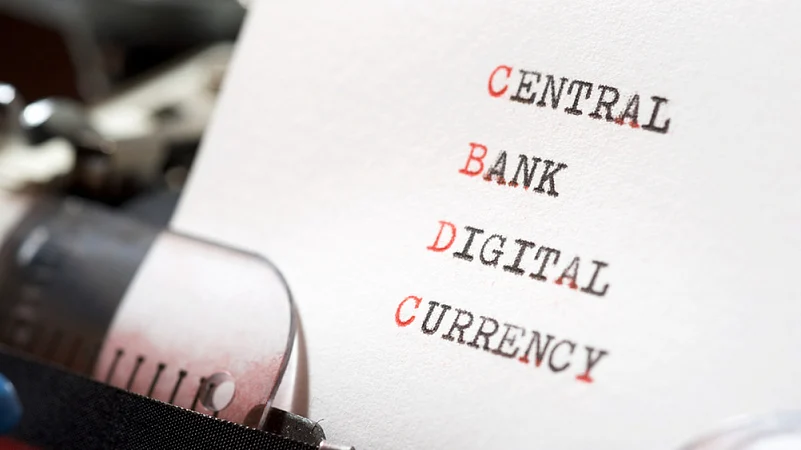While presenting Budget 2022, Finance Minister Nirmala Sitharaman said Digital Rupee, the name of the Central Bank Digital Currency (CBDC) in India, will be introduced using blockchain and other technologies. She added that the Reserve Bank of India (RBI) will issue these in 2022-23. “Introduction of Central Bank Digital Currency (CBDC) will give a big boost to digital economy. Digital currency will also lead to a more efficient and cheaper currency management system,” she said.
CBDC refers to the digital form of a country’s fiat currency, which is issued by the central bank of the country. Though it is in digital form, it can be exchanged with the fiat currency of the country. CBDC is a liability of the central bank.
“Digital rupee announcement is more formal. (However) RBI has not prepared its model or tested it. (The ) government has also not indicated when it will bring out (an) enabling law for it,” said former finance secretary, S.C. Garg.

Work In Progress
The central bank has started work on CBDC and other fintech-related activities. RBI has recently set up a new fintech department that will be the central point of contact in RBI for all fintech-related activities.
Moreover, earlier, during the Winter Session of Parliament, the finance ministry had said that it has taken a proposal from the RBI for an amendment to the Reserve Bank of India Act, 1934 to improve the scope of the definition of ‘bank note’ to include currency in digital form.
The crypto industry is in favour of a CBDC in India. Harish Prasad, head of banking-India, FIS, says the move by the government will trigger a wave of preparatory activity among retail payments providers and apps to offer payment mechanisms using Digital Rupee. “In China, major digital payments players and apps are preparing to offer Digital Yuan payments via their apps,” says Prasad.
Many countries are adopting or preparing their respective CBDCs. A BIS survey of January 2021 found that nearly 86 per cent of central banks were actively engaged in researching CBDC, while 60 per cent were testing the underlying technology and 14 per cent were already in the pilot-project phase.
"In case all central banks decide to grant cross-border access to CBDC and want to support interoperability with foreign CBDCs, then there is a need to create communication protocols and standards to enable domestic and foreign CBDCs to exchange information seamlessly,” says Prasanna Lohar, vice-president-technology, DCB Bank.
While it is early days and many details have to be ironed out before Digital Rupee is ready for use, there is a strong argument that favours digital currency to reduce dependence on cash. T. Rabi Sankar, deputy governor of RBI, said in a speech in July 2021 that "India’s high currency to GDP ratio holds out another benefit of CBDCs. To the extent large cash usage can be replaced by CBDCs, the cost of printing, transporting, storing and distributing currency can be reduced.”
There are various other benefits of digital currency. More people can be included in the formalised economy and thereby get better access to credit facilities. With the introduction of GST, India’s informal economy has shrunk to around 20 per cent of the formal economy from 52 per cent earlier, as per an economic research report by the State Bank of India. Various industry stakeholders expect CBDCs to shrink this number further as more people transact using digital currency. Tax evasion, money laundering and use of black money can be reduced further. Defaults in payments can be curtailed.













